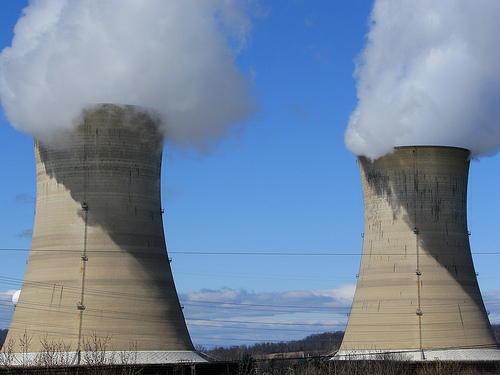Nuclear Power Plants Move to Software-Based Risk Assessments to Fend Off Fire
Nuclear power plants across the country with the support of the Nuclear Regulatory Commission (NRC) are moving to terminate human-led fire protection for systematic, computer-based risk assessments,according to The New York Times.
Traditionally, many nuclear power plants have had roving teams of patrols that visited critical sites at the plant to ensure a fire hadn't broke out. The practice started after a March 1975 fire at the Tennessee Valley Authority's Browns Ferry nuclear complex that almost led to a melt down. After the incident, the NRC set strict rules for how nuclear power plants operated.
"Nuclear power plants today use multiple layers of fire protection features to keep fires from damaging plant safety systems,"explains a NRC backgrounder. "Some of these features include fire barriers such as insulation, fire detection systems, and fire suppression systems (such as sprinklers). If a required element of fire protection is not available, the licensee must compensate for it, often by placing dedicated personnel on a continuous fire watch."
Yet comprehensive risk assessments aided by computer software programs may make such strict operating rules and human patrols a thing of the past. According to the Times:
To assess fire risk, engineers typically study diagrams of the plant and try to identify each problem that could occur and how likely it was to happen. In some locations, for example, inspectors or the plant workers have figured out that while the commission’s rules require a one-hour fire barrier, the material installed will not last that long.
Plants like Shearon Harris and a three-reactor plant in Oconee County, S.C., are now analyzing exactly how much combustible material is in each location and whether a fire on the floor could grow hot enough to burn a cable in an overhead tray. A perennial concern is that a fire could cause an electric current to leak from one cable to another, causing a short circuit that makes a pump start or stop. At Shearon Harris, owned by Progress Energy , engineers have reduced that risk by arranging to cut power to the motor that moves a valve, ensuring that it stayed put.
The NRC supports the move and allows plants to choose between either following the new risk assessment approach or its current fire-safety standards. Fifty-one of the nation's 104 plants have opted for the risk assessment approach.
Not everyone, however, is happy with this decision.
Edwin S. Lyman, a senior scientist at theUnion of Concerned Scientists, told the Times that “The approach the commission wants to take is to wave a magic wand of probabilistic risk assessment and make a lot of the requirements go away.”
Lyman believes there isn't enough information on how fires start at nuclear power plants to allow software-aided risk assessments to displace other controls.
“We need ‘defense in depth’ to compensate for what we don’t know,” he told the Times.
